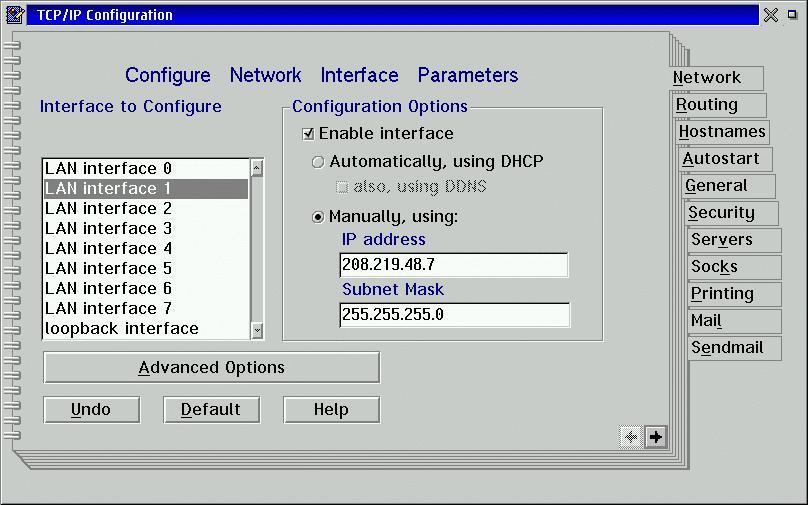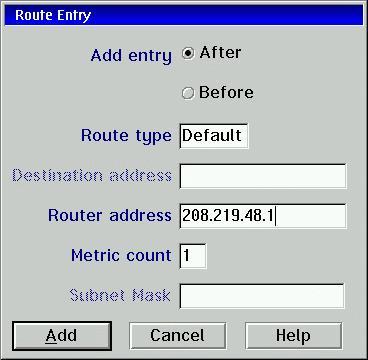
VOICE Home Page: http://www.os2voice.org
[Previous Page] [Next Page]
[Features Index]
 VOICE Home Page: http://www.os2voice.org |
[Previous Page] [Next Page] [Features Index] |
By: David Eckard swordedg@ntrnet.net
Intrigued, I called the 800 number listed. They did indeed confirm that till
the end of December, the $340 installation fee was waved. Once they answered my
questions, they did a test on my line to determine if I was suitable for ADSL. ADSL
requires you to be within something like 18,000 feet or about 3 miles of the central
phone office. This office is usually a small brick building along the road somewhere
near you. There are no people stationed there. In my case, I was eligible for ADSL.
The other thing they checked for was the ability to connect with my ISP. I forget
the terminology but basically, GTE had a route from my central office to my ISP.
This meant that I could keep my current ISP, something I liked a lot.
To understand what the splitter is doing, you need
to know something about the way ADSL works. Your regular phone line normally carries
an audio frequency range from 0 to maybe 4000 hertz. ADSL lines carry an audio frequency
range from 0 hertz to about 1 megahertz. The first 4000 hertz used for your regular
phone line and the rest for ADSL. When your phone line comes into the house, it
contains both your regular line and your ADSL signal. The splitter is used to separate
your regular phone signal from the ADSL signal. The regular phone signal still runs
on the red and green lines, just like it does without ADSL. The yellow and black
pair are used for the ADSL line. This means that if you currently have two phone
lines, you will either have to run another line, or drop the second phone line.
I had my computer modem attached to the jack in my
living room. This jack was not changed. A two line splitter was installed here.
My regular phone was reattached to line one. We reused the modem phone line for
ADSL. The other end was attached to a Fujitsu speed port modem. When I turned it
on, the three led's lit meaning it was communicating with my ISP. Total installation
time for GTE at my location, 15 minutes.
I knew before hand that I had to supply my own ethernet card. Knowing that I
was getting 768 Kb/s down, I knew that performance of this card was not overly important.
So I bought a $12, no name 10 Mb/s combo card from the local computer store, AFTER
checking to see if there were OS/2 drivers. I already had one ethernet card in my
computer for a home lan. I removed my modem as I ran out of slots and inserted the
new network card into a PCI slot.
I used MPTS (May be called "Adapters and Protocol Services" or just
"MPTS" in your System Setup Folder, or type MPTS
at a command prompt) to install my new network card. My original ethernet adapter
is an AMD Family adapter installed in slot 0. Slot 1 is my new adapter. For both
cards, I had to click on Other Adapters to add it to the list. Then I installed
only the IBM TCP/IP protocol on my new adapter.
Next, you have to configure tcpip services. I am running the 16bit TCP/IP stack.
The following may be slightly different for the 32bit stack. I have always just
opened a command line session and typed, TCPCFG, to get
this. Or you can open the "TCP/IP Configuration (LAN)" object in the "TCPIP
Utilities (LAN)" folder. You need to configure the first three tabs of this.
I get a static IP address that was given to my by my ISP. Lan interface 0 is my
original ethernet card. Lan Interface 1 is my new one, the one to be used for ADSL.

On the network tab, shown above, I clicked on lan 1, manual, and entered my IP
address and Subnet Mask.
The routing tab must contain a Default route. This tells your computer where
to go for any IP address that it does not have a specific route for it. Without
this, you can only communicate with your local network. My ISP has two connections
to the internet. The name servers are on a different sub net than my ADSL line.
To get to my name servers, my ISP uses a gateway server. Click on add and replace
the word network with a D and fill in the address of your gateway server (this comes
from your ISP) as shown below. This will fill in a default entry and a net entry
for you.

The Hostnames tab is where you should add the address of your name servers (this
information comes from your ISP.)
Now close the window and tell it to save when asked. Reboot.
I next started netscape. When it came up with my default home page across the
net, it was celebrating time. The only test that failed for me was my news reader.
This was NOT my problem as my ISP first, didn't have my address configured as an
internal address, then it didn't have me listed as allowed to use the news server.
Getting that solved took five days because of weather and other factors (we got
over 20 inches of snow in Raleigh and at least 15 at my apartment. Three YEARS worth
in one storm and most of that melts by 9 am.)

My original reason for investigating ADSL was the speed improvement. I was also missing telephone calls due to my time on the net. The seven dollar difference between ADSL and a second line sold me.